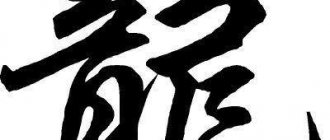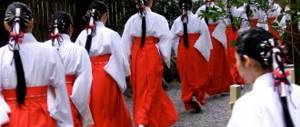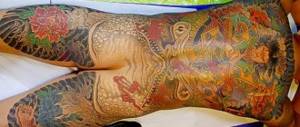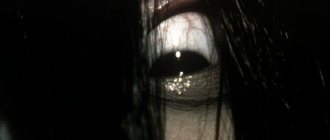Japanese mythology is rich in unusual, interesting, ambiguous creatures. Among the host of semi-divine, mythical, powerful characters, the nine-tailed fox especially stands out. Residents of the Land of the Rising Sun call him Kitsune. The word means a fox (including the most common one - living in the forest). A folklore character is a wise, powerful creature with magical powers who lives much longer than a person. It is capable of reincarnating as a human and learns to do so after living for a century or half a century. More often it chooses the appearance of a charming girl, less often - a man. Researchers of Japanese mythology have established that the modern image of a magical fox comes from the traditional symbol of the goddess Inari and the Chinese fox-like werewolf demon.
Magic fox
General information, origin
In Japan, the magical fox is a wise animal close to the gods. She can take over someone else's body, create flames, and enter dreams. This creature creates complex illusions that cannot be distinguished from reality. In other myths, a semi-divine animal bends time and space coordinates, drives people crazy and transforms into incredible forms. There are beliefs about how Kitsune became the second moon or a huge tree. The creature's specialty is the duty to keep a promise. If it breaks its word, it will lose power or fall in rank.
In the mythology of the Land of the Rising Sun, the werewolf has properties reminiscent of vampires. He sucks out the vital juices and fortitude from the victim who makes contact. Often foxes guard hoshi no tama - star balls (mysterious objects in the shape of a ball or pear). If a person takes possession of the artifact, he will force the fox to help in all endeavors. Probably, Hoshi no Tama holds the magic of the Japanese half-demon.
Today Kitsune is better known thanks to the popular projects “Naruto”, “Ghost from Tsushima”, but the mythological image has existed much longer. Legends about magical animals come from Shintoism and Buddhism. In Shinto, foxes are the animals of Inari, the patroness of rice plantations and enterprising people. The current demon in the past is Inari's messenger, Tsukai, sent to people. Over the centuries, the boundary between Inari and Tsukai has blurred, and now the goddess is often depicted as a fox with nine tails.
The name “kitsune” spread among Buddhists in the 9th and 10th centuries. The popularity of the image is due to the secret school of Shingon. Followers of the direction worshiped Dakini - a god who rode a fox.
nine tailed fox
Links
- Naruto chapter 404
- Naruto chapter 318
- Naruto chapter 499
- Naruto chapter 567
- Naruto chapters 467, 510
- Naruto chapter 568
- Naruto chapter 404
- Naruto Chapter 493
- Naruto chapter 458
- Naruto chapter 529
| This article is not complete. You can help the project by correcting and expanding it. | |
| s • o • p Tailed Beasts and Jinchūriki | |
| Tailed beasts | Shukaku • Matatabi • Isobu • Son Goku • Kokuou • Saiken • Choumei • Gyuki • Kurama • Ten-Tails • Zero-Tails |
| jinchūriki | Naruto Uzumaki • Killer B • Menma Uzumaki (World of Genjutsu) • Menma Namikaze (alternate reality) |
| Pseudo-jinchuuriki | Sora • Kinkaku • Ginkaku • Nine-tailed clone of Naruto (anime only) • Hoichi |
| Former Jinchūriki | Gaara • Obito Uchiha • Minato Namikaze • Shinno • Amaru |
| Deceased Jinchūriki | Yugito Nii • Yagura • Roushi • Han • Utakata • Fuu • Mito Uzumaki • Kushina Uzumaki • Fukai • Hagoromo Ootsutsuki • Rin Nohara • Bunpuku • Madara Uchiha |
| General skills | Jinchūriki Forms • Tailed Beast Ball • Tailed Beast Telepathy |
| Related Articles | |
| Shinobi Villages | Sunagakure • Kumogakure • Kirigakure • Iwagakure • Takigakure • Konohagakure • Uzushiogakure |
| Clans | Uzumaki Clan • Senju Clan • Uchiha Clan • Ootsutsuki Clan • Kazekage Clan |
| Container | Gedo Mazo • Kaguya Ōtsutsuki |
Appearance
The main feature of the appearance of a magical fox is its tail. The more centuries a creature has lived, the more tails there are; the maximum number is nine. Some legends talk about the appearance of a new tail once every century; others say once in a millennium. Most fairy-tale heroes have one, five or nine tails. A Kitsune that receives nine tails gains silver, gold or snow-white fur. In fairy tales, such foxes are called kyubi no kitsune. Kyuubi no kitsune is a guardian spirit, a wise creature that helps the soul find the right path. More often it helps the chosen soul only for a day or a few; less likely to become attached for years. The nine-tailed mythical beast controls the weather, acts as a guide to other worlds, but does not trust people.
It is known from myths that it is not easy for foxes to hide their tails when transforming into humans. Any attentive hero can expose the magical beast.
A magical creature has several tails
The ability to transform into another form is not limited to transforming into a human. From ancient stories it is known that sometimes Kitsune turns into a giant tree, and from the latest legends - about turning into a ghost train. In 1889, a legend spread about a ghostly train on the Yokohama-Tokyo line (the oldest railway in Japan). The train was traveling towards the present, but did not approach it, but only frightened the driver. When the driver of the train managed to catch up with the mirage, there was no collision, but a fox got under the wheels. In the middle of the next century, ghost trains appeared in Kyushu. It was believed that these were the ghosts of foxes whose houses were destroyed by the railroad builders. Later, stories spread about Kitsune turning into cars and teapots.
Another feature of a werewolf is the sounds it makes. There are two calls: kon-kon and kay-kay. The first indicates belonging to the messengers of Inari, the second indicates the evil essence of the werewolf. A suffering fox makes sounds similar to the cry of a newborn.
Additional characters
Sketches for an original tattoo with a cunningly wise character from Japanese folklore can be made in black and white style, but a colorful image of a demonic creature surrounded by mysterious symbols looks much more impressive.
To turn a Kitsune tattoo into a full-fledged amulet, the werefox is placed on some background: a scattering of flowers or leaves, scattered skulls. The drawing of a demoness, complemented by the sacred symbol “dream catcher”, will become protection for the owner from evil spirits, magical influences and witchcraft.
The classic version of a tattoo artist is a sketch of a fox with flowers; the drawing is recognized as a symbol of immortality. If the animal’s face is framed, this is considered a sign of the aristocratic nature of the owner of the tattoo. Funny scenes with Kitsune show a humorous character, and the image of only the head of a werewolf animal is considered to be a sign of the rebirth of the owner’s soul.
A Japanese mask of a cunning demon, tattooed on the body, or an image of just the face of a fox is the main element of the tattoo, surrounded by a scattering of secondary figures. In addition to additional symbols, it is equally important to consider how the mystical hero is depicted - statically or dynamically.
To create polysyllabic figures, choose sketches with the face or mask of a Japanese demon, placing the main element in the center.
Depending on the features of the image of the personal guardian, the fox tattoo takes on a certain meaning:
- an animal in motion is a sign of determination;
- sitting posture is a sign of prudence;
- a fox with a curved back - the desire for seduction;
- an animal hidden inside the skull - the mysticism of rebirth;
- a fox over a skull or a paw on a skull - dominance over life and death;
- the severed head of a fox (namakubi) is a symbol of protection from enemies.
In places of detention, a fox tattoo is interpreted not by its external features and additions, but by the abbreviation of the animal’s name. LIS is the phrase "Love And Death". A similar inscription is used to mark insidious liars who have caused bodily harm to a loved one. It happens that experienced gamblers decorate their bodies with a sneaking fox; the purpose of such a tattoo is to cause fear in others when communicating with an avid gambler.
Types of kitsune
Folklore divides magical foxes into two categories: mebu and nogitsune. Mebu is a divine, heavenly individual. She is the tsukai Inari, or even the goddess herself.
Nogitsune - wild fox. This fox is not an ordinary field fox, threatening only chickens. In magical stories, she plots intrigues, plots evil, and harms people. Most often the victims are samurai. Foxes' favorite targets are people who are too proud, unreasonable, and arrogant. The magical beast harms greedy merchants and boastful people. Having met a good man, Kitsune becomes an exemplary wife, helping her chosen one to achieve success.
Magic beast
Gallery
Still from episode 245 of Naruto Shippuuden.
Still from episode 245 of Naruto Shippuuden.
> Notes
- In the image of kitsune werefoxes, but this is not mentioned in the works
Legend
Myths tell that in ancient times a great famine reigned in the archipelago. Inari, responsible for fertility and rice plantations, was a sweet and kind goddess. She took pity on the suffering peasants and came down to them in the guise of a fox to save them from hunger. Realizing that trouble could strike the people again, the goddess, having coped with the shortage of supplies, left her Tsukai followers to keep order on the planet. Inari's wards respond to human harmony, fertility, and happiness.
Tsukai – a symbol of harmony
All Tsukai are girls with unusual tails. They replace each other: when one finishes service, the other immediately replaces it. At first, Tsukai appears in the form of an animal, but then gains the ability to transform after gaining experience and doing many good deeds. The highest rank allows a mythical creature to become human. Only a dog sensitive to smells can identify such a fox.
Tsukai's life is completely determined by Inari. The goddess decides when the time comes to return, how many years to live on earth, and how to help people.
Other
- One of the Akatsuki members, Kisame Hoshigaki, possesses a huge amount of Chakra, which is why he is called the “Tail-less Bijuu”. The Fourth Raikage's chakra level is also compared to that of a bijuu.
- In the fifth Naruto film, Zero Tails (零尾, Reibi) appears. Even though its name refers to the number of tails, it actually has nothing to do with tailed beasts.
- Only Kurama among all the bijuu became the object of the Summoning Technique.
- One day, a shinobi from Kumogakure tried to repeat the experience of the brothers Kinkaku and Ginkaku by eating Gyuuki's tentacle. But he didn't become a pseudo-jinchuuriki, he just died. The brothers' success is explained by their possible relationship with the Sage of the Six Paths himself.
Obsession
The belief in Kitsune possession goes back centuries. Ancient Japanese doctors even diagnosed kitsune-tsuki (obsession with a fox). In 1876, the first official summary of this condition appeared. Its author, Erwin Baltz, recognized kitsune-tsuki as a nervous disorder, mania, quite widespread in the archipelago. People believe that the mythical beast penetrates the chest of a person and lives a separate life, while the possessed one understands the thoughts of the animal. All victims of the disease are women of the lowest social level.
Hygiene measures, communication with a trusted person, and maintaining the general tone of the body can save a person from kitsune-tsuki. Liberation is a culturally determined effect, like the disease itself.
Usually possession is a punishment for a sacrilegious act, harm done to a living being. Kitsune-tsuki pursues people who kill foxes, as well as those who are subject to unreasonably strong feelings. Excessive experiences burn out the personality from the inside. The vacated space is occupied by a mythical beast.
Kitsune-tsuki is a culturally determined phenomenon
Where is the best place to place a drawing of a fox mask?
When you see a tattoo with a fox mask on a person’s body, you can count on the wisdom and cunning of its owner, but the wearer hides his qualities. If it is a body drawing of an animal with red fur, the tattoo may signal hypocrisy and the ability to betray. At the same time, the tattooed face of the fox shows the femininity and sexuality of the owner of the picture.
There are no strict definitions of where to get a fox tattoo. Japanese belief says that an insidious character will share his qualities with the owner of a permanent pattern on the body.
The classic places to place a two-faced demon are considered to be the back, arms or shoulders:
- on the back a large panel in color with a full image of a nine-tailed fox in the dynamics of running looks impressive;
- It is better to print small designs on the shoulder blade or forearm, wrist, very small ones - on the finger;
- a tattoo with a fox mask framed by additional symbols is placed below or above the elbow, in the calf muscle area, on the thigh;
- if the hand is chosen as the body canvas, this is the ideal place for the sleeve, where the figure of the animal will be key.
The body painting with a fox looks interesting, which continues from the upper part of the chest onto the arm, going down below the elbow. The full-length tattooed image of Kitsune in a Japanese kimono looks no less impressive. The colorful plot, located on the left side of the male torso from the shoulder to the lower back with a transition to the thigh, when moving, creates the impression of a living demon.
A large-sized Japanese fox mask, displayed in color, requires meticulous and lengthy work by the tattoo artist to translate the plot onto the body. Therefore, the neck and lower back are rarely decorated with such a pattern. If a tattoo with a red-haired cheat or her mask will play the role of a talisman, the design is placed in a place closed from public view. Then the amulet with the demon, stuffed mainly on the left side, becomes the most powerful.
Magic abilities
The main magical ability of Kitsune is turning into another creature (and inanimate objects). This quality is associated with age, experience, and skills. In addition to the ability to transform, the semi-divine beast is capable of creating flames and causing rain in clear skies.
Flame
Myths tell of the connection between fire and a magical fox. Kitsune create sparks by hitting the ground with their tail, causing fires and protecting houses near which they are located from fire. Sometimes foxes predict a fire by suddenly appearing near a house or coming in a dream.
Some believe that Kitsune's breath is fire. The beast is surrounded by a glowing outline, showing its nature.
Myths are reflected in the name of will-o'-the-wisps - they are called kitsune-bi. They believe that the lights are the breath of magical animals.
Fire is the element of Kitsune
The Art of Deception
In Japanese myths, Kitsune is practically synonymous with deception. Foxes are capable of cruel jokes and can deceive the smartest person. They use magical powers, show what is happening from a favorable angle, and create illusions that cannot be distinguished from reality. One myth tells of how a fox created the illusion of a huge smoky, ash cloud, a hot shower and rumbling thunder that sounded like the world was shattering into pieces. The main character of the myth was not afraid and did not run away, and soon realized that everything that was happening was just the magic of the fox.
Story
Even before the founding of the ninja village, there was only one demon - the Ten-Tails, who terrified the whole world. The Sage of Six Paths was able to defeat him and seal him inside himself, thus becoming the first jinchuuriki. Knowing that after his death the seal would disappear and the Ten-Tails would break free, the Sage divided the Ten-Tails' power into nine parts (9 tailed beasts), distributing them throughout the world, and sent the Ten-Tails' body to the sky and sealed it in what later became the Moon. The sage also gave a name to each animal.
Sage of the Six Paths and the little Nine Bijuu
During the formation of shinobi villages, First Hokage Hashirama Senju used his Wood Release to capture and distribute several tailed beasts to different villages to create and maintain a balance of power between them. However, after Hashirama's death, the hidden villages had many problems containing their demons, which often broke free. For this reason, the decision was made to seal the tailed beasts into humans, in hopes of using the tailed beasts as weapons through jinchūriki (or, in the case of the Hidden Leaf Village, keeping the beast from causing harm). Trying to avoid the jinchuuriki becoming a traitor, a tradition was adopted of choosing future hosts from among the relatives of their Kage. Thus, the jinchūriki not only remained loyal to their village and its leader, but also served as living proof of the kage's power. For example, Gaara was the son of the Fourth Kazekage, and Kira B was the adoptive brother and fighting partner of the Fourth Raikage.
Throughout history, few people have been able to completely control the demon within them. In addition, some were able to use the power of the tailed beasts even without being real jinchuuriki. The legendary brothers Kinkaku and Ginkaku, having been swallowed by Kurama, survived in the stomach of the beast and were even able to feed on its poisonous flesh, thanks to which they absorbed a sufficient amount of its chakra and became “pseudo-jinchuuriki”. Madara Uchiha and Tobi both controlled Kurama's Sharingan and could even summon it.
Akatsuki, an organization that collects tailed beasts, possessed seven of nine demons during the Fourth Shinobi World War.
Inari Shrines - Kitsune Worship
Inari is one of the main goddesses in Shinto. In front of each of her sanctuaries there is a sculpture of a fox, the tail of which resembles a rice tassel.
The oldest and most famous shrine is located in Fushimi. It dates back to the 7th century, burned down in 1475, and was restored in 1494. The complex consists of wooden buildings, beautiful gates, and a ceremonial site. Scarlet torii are world famous - numerous gates that form a magical corridor.
Kitsune are related to Inari
Tattoo color
In the traditions of Japanese mask making art, it is customary to use two color categories to depict Kitsune:
- white color is traditionally considered a symbol of nothingness;
- shades of red are associated with fire or the sun.
Color duality corresponds to two aspects of an insidious image - warmth and protection from magical influences, or deceit and destruction with fire. Depending on the chosen design, the Japanese fox tattoo can be colorful or black and white. In this case, white color is associated with wealth not only material, but also spiritual. The monochrome blackness of the tattoo is a sign of independence and determination of the male tattoo fan who does not make concessions.
For a color image of a personal guardian, red-orange shades are chosen; the background color palette includes blue, green, and yellow. The rules for preparing sketches do not provide for strict restrictions on the image of the nine-tailed beast.










